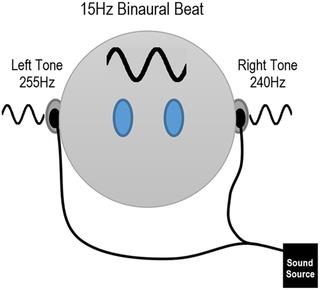So I am trying to figure out if Binaural Beats can help with brain plasticity. I have not figured it out yet.
I did find a free program to create my own Binaural Beats: gnaural.sourceforge.net/
And I found what looks to be a well done YouTube video where I could copy some bonaural beats: youtu.be/eqKQACO4HAk
But I have not figured out if I want Gamma, Beta, or Theta waves (or any waves). For now I am listening to that YouTube one until I figure out what I want to try.
Since I have not figured it out, I am just dumping all my notes here for anybody to pick through:
☐ Effects of Auditory Binaural Beats on Consciousness and the Human Nervous System proquest.com/openview/a00b7...
☐ Modulatory Effect of Association of Brain Stimulation by Light and Binaural Beats in Specific Brain Waves ncbi.nlm.nih.gov/labs/pmc/a...
☐ The effect of binaural beats on working memory capacity researchgate.net/publicatio...
☐ Effects of binaural beats and isochronic tones on brain wave modulation: Literature review academia.edu/63364592/Effec...
☐ Neuroacoustical Stimulation of Parkinson’s Disease Patients: A Case Study researchgate.net/publicatio...
☐ Auditory Beat Stimulation and its Effects on Cognition and Mood States ncbi.nlm.nih.gov/labs/pmc/a...
☐ Electrophysiological measurement of binaural beats: Effects of primary tone frequency and observer age ncbi.nlm.nih.gov/labs/pmc/a...
☐ 40-Hz Binaural beats enhance training to mitigate the attentional blink nature.com/articles/s41598-...
☐ Pure tones of 420 Hz and 460 Hz presented to the left and right ear, respectively, were perceived as a 40-Hz BB with a 440 Hz fundamental tone. Pure tones of 431.85 Hz and 448.15 Hz were used to produce the 16-Hz BB with the same fundamental tone. Sound files of 15 min duration were created with Matlab and presented continuously in the background during the RSVP experiment.
☐ alpha (10 Hz), beta (20 Hz) and gamma (40 Hz)
☐ Binaural Beats, Brain Rhythms and Binaural Hearing - Bernhard Ross neuroscience.stanford.edu/e...
☐ The Effect of Binaural Beats on Visuospatial Working Memory and Cortical Connectivity journals.plos.org/plosone/a...
☐ The Effect of Binaural Beats on Visuospatial Working Memory and Cortical Connectivity journals.plos.org/plosone/a...
☐ In conclusion, listening to 15Hz binaural beats during a visuospatial working memory task can not only increase the response accuracy but also change the properties of the the cortical networks supporting task performance. A 3% increase in Δ Accuracy, over the 5 minutes, was found in participants who listened to the 15Hz binaural beat. All other acoustic stimulation conditions produced a negative change.
☐ Binaural beats: extraordinary habit for your brain’s health and creativity medium.com/live-your-life-o...
☐ Human Central Auditory Plasticity Associated With Tone Sequence Learning learnmem.cshlp.org/content/...
☐ Plastic changes in the auditory cortex induced by intensive frequency discrimination training brainmusic.org/EducationalA...
☐ The slow auditory evoked (wave N1m) and mismatch field (MMF) elicited by sequences of pure tones of 1000 Hz and deviant tones of 1050, 1010 and 1005 Hz were measured before, during and 3 weeks after subjects were trained at frequency discrimination for 15 sessions (over 3 weeks) using an odd-ball procedure. The task of the subject was to detect deviants differing by progressively smaller frequency shifts from the standard stimulus. Frequency discrimination improved rapidly in the first week and was followed by small but constant improvements thereafter. N1m and MMF responses to the deviant stimuli increased in amplitude during training. This enhancement persisted until training was finished, but decreased 3 weeks later. The results suggest a plastic reorganization of the cortical representation for the trained frequencies.
☐ This one is not using binaural beats, but is using pure tones and having participants identify the pure or altered tones.
☐ BINAURAL BEAT AND BRAIN ENTRAINMENT cordis.europa.eu/docs/proje...
☐ Binaural beats psychology.fandom.com/wiki/...
☐ Cognitive behavioral therapy through binaural beats discussed mustafaprize.org/news/?id=5220
☐ Binaural Beats and Their Interaction Within the Superior Olivary Complex by
Taylor Janay Crawford keep.lib.asu.edu/_flysystem...


